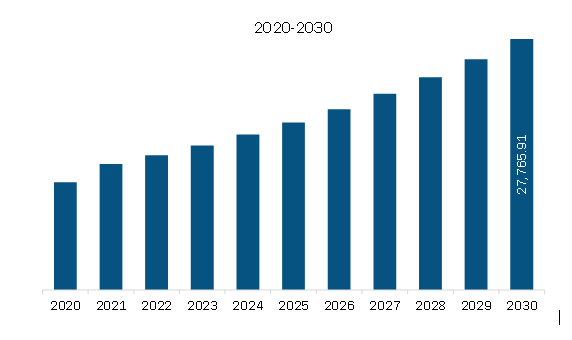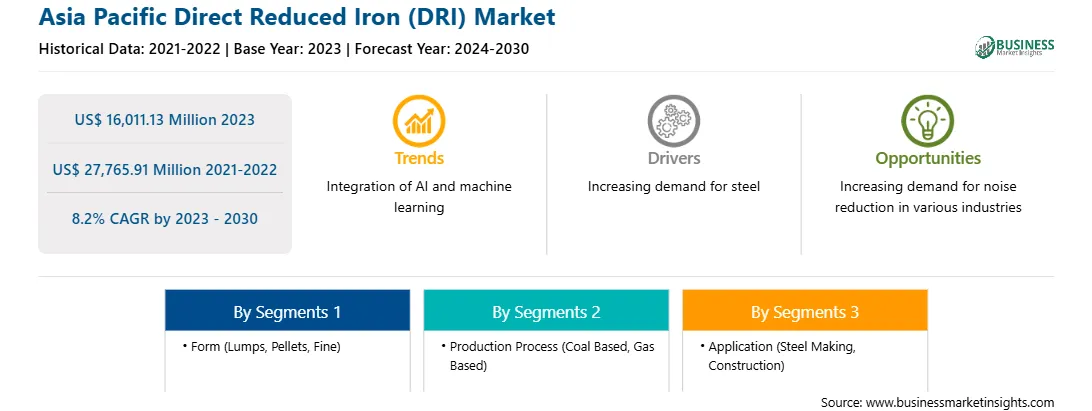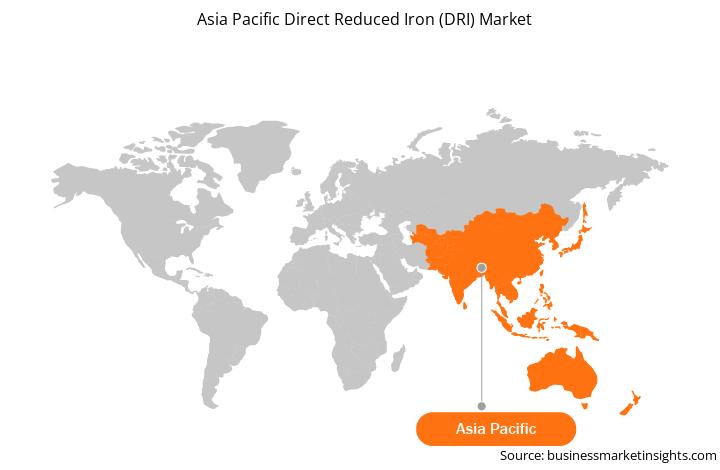Awareness regarding carbon emissions and taking a step ahead in achieving sustainable goals is the primary concern for manufacturing industries. Carbon emissions from manufacturing industries prominently contribute to the greenhouse gas generated throughout the world. According to the World Steel Association, the steel industry generated 3 billion tons of CO2 in 2021. CO2 emissions from the steel industry alone contribute to ~7–9% of overall greenhouse gas emissions, leading to a huge impact on the climate. Various government bodies are taking initiatives to reduce carbon emission levels to achieve a sustainable future. The hydrogen-based technology for ironmaking is one such process for nullifying carbon emissions by replacing coke and fossil fuel in traditional blast furnace-based steelmaking.
Asia Pacific comprises economies such as China, India, Japan, Malaysia, South Korea, and the Rest of Asia Pacific. Many of the Asia Pacific countries, such as China and India, are among the world's fastest growing economy. With a growing industrialization, steel and construction industry are in high demand in Asia Pacific. Asia contributes to large percentage of the world’s production of steel. China, India, Japan, and South Korea made the top 10 list of steel producers globally. The construction industry is expanding in the Asia Pacific region due to its increasing urbanization.
Strategic insights for the Asia Pacific Direct Reduced Iron (DRI) provides data-driven analysis of the industry landscape, including current trends, key players, and regional nuances. These insights offer actionable recommendations, enabling readers to differentiate themselves from competitors by identifying untapped segments or developing unique value propositions. Leveraging data analytics, these insights help industry players anticipate the market shifts, whether investors, manufacturers, or other stakeholders. A future-oriented perspective is essential, helping stakeholders anticipate market shifts and position themselves for long-term success in this dynamic region. Ultimately, effective strategic insights empower readers to make informed decisions that drive profitability and achieve their business objectives within the market. The geographic scope of the Asia Pacific Direct Reduced Iron (DRI) refers to the specific areas in which a business operates and competes. Understanding local distinctions, such as diverse consumer preferences (e.g., demand for specific plug types or battery backup durations), varying economic conditions, and regulatory environments, is crucial for tailoring strategies to specific markets. Businesses can expand their reach by identifying underserved areas or adapting their offerings to meet local demands. A clear market focus allows for more effective resource allocation, targeted marketing campaigns, and better positioning against local competitors, ultimately driving growth in those targeted areas.
Asia Pacific Direct Reduced Iron (DRI) Strategic Insights

Asia Pacific Direct Reduced Iron (DRI) Report Scope
Report Attribute
Details
Market size in 2023
US$ 16,011.13 Million
Market Size by 2030
US$ 27,765.91 Million
Global CAGR (2023 - 2030)
8.2%
Historical Data
2021-2022
Forecast period
2024-2030
Segments Covered
By Form
By Production Process
By Application
Regions and Countries Covered
Asia-Pacific
Market leaders and key company profiles
Asia Pacific Direct Reduced Iron (DRI) Regional Insights

Asia Pacific Direct Reduced Iron (DRI) Market Segmentation
The Asia Pacific Direct Reduced Iron (DRI) Market is segmented into form, production process, application, and Country.
Based on from, the Asia Pacific Direct Reduced Iron (DRI) Market is segmented into lumps, pellets, and fine. The pellets segment held a larger share of the Asia Pacific Direct Reduced Iron (DRI) Market in 2023.
Based on production process, the Asia Pacific Direct Reduced Iron (DRI) Market is segmented into coal based, and gas based. The coal-based segment held the largest share of the Asia Pacific Direct Reduced Iron (DRI) Market in 2023.
Based on application, the Asia Pacific Direct Reduced Iron (DRI) Market is segmented into steel making, and construction. The construction held the largest share of the Asia Pacific Direct Reduced Iron (DRI) Market in 2023.
Based on country, the Asia Pacific Direct Reduced Iron (DRI) Market is segmented into the China, India, Japan, Malaysia, South Korea, and the Rest of Asia Pacific. The India dominated the share of the Asia Pacific Direct Reduced Iron (DRI) Market in 2023.
Some of the key players operating in the Asia Pacific direct reduced iron (DRI) market are Kobe Steel Ltd; SMS Group GmbH; Voestalpine AG; JSW Steel Ltd; Tenova SpA; Liberty Steel Group Holdings UK Ltd; and Bharat Engineering Works Pvt Ltd.
The Asia Pacific Direct Reduced Iron (DRI) Market is valued at US$ 16,011.13 Million in 2023, it is projected to reach US$ 27,765.91 Million by 2030.
As per our report Asia Pacific Direct Reduced Iron (DRI) Market, the market size is valued at US$ 16,011.13 Million in 2023, projecting it to reach US$ 27,765.91 Million by 2030. This translates to a CAGR of approximately 8.2% during the forecast period.
The Asia Pacific Direct Reduced Iron (DRI) Market report typically cover these key segments-
The historic period, base year, and forecast period can vary slightly depending on the specific market research report. However, for the Asia Pacific Direct Reduced Iron (DRI) Market report:
The Asia Pacific Direct Reduced Iron (DRI) Market is populated by several key players, each contributing to its growth and innovation. Some of the major players include:
The Asia Pacific Direct Reduced Iron (DRI) Market report is valuable for diverse stakeholders, including:
Essentially, anyone involved in or considering involvement in the Asia Pacific Direct Reduced Iron (DRI) Market value chain can benefit from the information contained in a comprehensive market report.